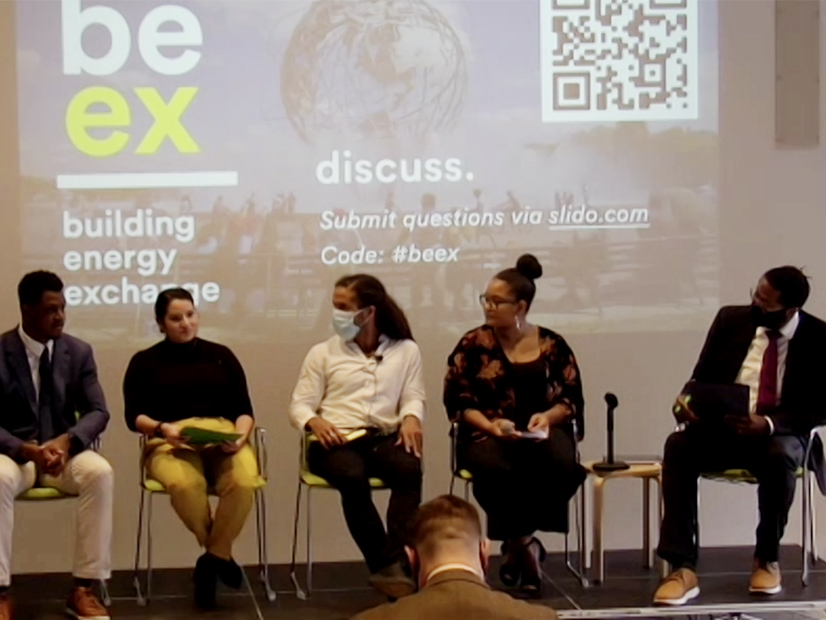
New York City officials are working to integrate environmental justice (EJ) considerations into all aspects of the city’s decision-making and planning to lessen the disproportionate impacts of policy on low-income communities and communities of color.
Low-income individuals and people of color typically face the highest energy burden, paying the greatest share of their income for their energy needs, but they also have a disproportionate pollution burden, said Commissioner Rory Christian of the state’s Public Service Commission during an Integrative Environmental Justice webinar hosted by Building Energy Exchange on Wednesday.
The federal infrastructure plan will hopefully make massive investments in equitable energy throughout the country, and New York’s Climate Leadership and Community Protection Act (CLCPA) mandates that 40% of all state clean energy investments take place in disadvantaged communities, Christian said.
“All of these combined will have a transformative impact on people of color and low-income homes, but the important thing is we must do it right,” Christian said. The question is “how to deploy what will likely be a massive influx of funds in the most effective way to drive the most powerful results.”
The pandemic has exacerbated the situation, and the state projects that many people will face eviction for unpaid rent, and those same people being “multiple hundreds of millions of dollars behind in energy bills, from electricity to natural gas water and other utilities,” he said.
One of the mandates put forward by the governor of New York is setting a cap on the energy burden at 6% of income for all New Yorkers going forward, “so to achieve that goal we’re going to need not just to invest in energy efficiency, but in good practices, effective energy management policies and behaviors and a slew of other things,” Christian said.
Cumulative Burdens
Environmental justice communities also face cumulative burdens, with one community perhaps hosting “an ultra-polluting peaker plant,” as well as a waste treatment plant, a sewage treatment plant, a bus depot and a waste transfer station, said Jasmine Graham, energy justice policy manager for WE ACT for Environmental Justice.
“All of those disproportionate pollution burdens on the exterior do impact the quality internally as well,” Graham said. “Within EJ communities, buildings are older, less efficient and more likely to have issues like lead, mold and asbestos that contribute to negative health impacts.”
A decade of advocacy at the grassroots level led to passage of laws in New York City, including Local Law 60 and Local Law 64, which mandate broad public involvement in the preparation of an Environmental Justice for All Report, said Adriana Espinoza, senior EJ advisor for the Mayor’s Office of Climate Policy.
In the report “we’re also going to be looking internally at our own agencies and own programs to determine the extent of the city’s contribution to environmental justice and how our programs are helping to advance environmental justice, or maybe, conversely, contributing to environmental justice concerns,” Espinoza said.
One example of “baking environmental justice considerations into city programs” is the New York City Accelerator, “a free tool in our toolkit where we can help reach our goals of carbon neutrality by 2050,” Espinoza said.
The Accelerator offers free technical guidance to boost energy performance, increase energy efficiencies, control costs and meet local law compliance.
“We bake environmental justice into that program first and foremost with targeted outreach, making sure that we are showing up to neighborhoods that are most impacted by climate change and can benefit the most from energy efficiency upgrades,” Espinoza said. “So, within the New York City Accelerator program is a concerted effort to reach neighborhoods in upper Manhattan and central Brooklyn, specifically.”
It’s also important when thinking about energy efficiency improvements to try at the same time to address other issues that tenants face, said Casey Weston, environmental policy analyst for the city’s Department of Health and Mental Hygiene.
It could be beneficial, according to Weston, to address mold or lead exposure while improving a building envelop, or incorporate health benefits into the cost benefit analysis for incentives.
“Thinking about reductions in emergency department visits, for example, and including those benefits, those are cost savings to all the taxpayers, and more importantly benefits to people who should not be exposed to these pollutants in the first place,” Weston said.


